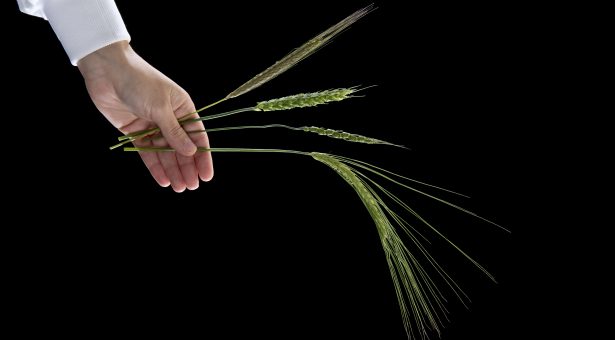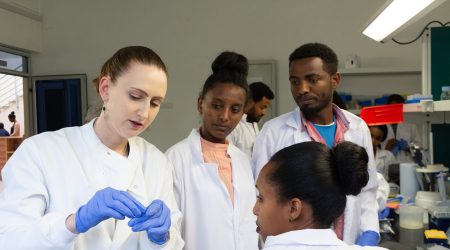Funding to study resistance genes in wild wheat will help combat rust diseases

The 2Blades Foundation and collaborators at the John Innes Centre, University of Minnesota, and Kansas State University, have received funding to study wild emmer wheat to discover genes that can help farmers combat devastating wheat rust diseases.
The United States Department of Agriculture’s (USDA) National Institute of Food and Agriculture has awarded a $650,000 grant through their Agriculture and Food Research Initiative (AFRI) for the study of emmer wheat – one of the very first cereals to be cultivated in agriculture.
The aim of the collaboration is to identify genes that could help make wheat resistant to “rust” diseases, which are estimated to cost farmers and consumers nearly $3billion each year.
Wheat rusts have destroyed crops since Roman times, including multiple epidemics in the US in the past century.
2Blades is a United States-based charitable foundation aiming to deliver environmentally sustainable solutions for the benefit of healthy food production.
The current project builds on 2Blades’ 12-year effort to source resistance genes from wheat and its domesticated and wild relatives, and to deploy them in elite, cultivated wheat varieties. It brings together leading scientists in wheat and wheat rusts with key resources.
The project team includes: Jesse Poland, a wheat geneticist at Kansas State University’s Wheat Genetics Resource Center, which maintains extensive collections of wild wheat relatives including wild emmer wheat; Brian Steffenson, a plant pathologist at the University of Minnesota, with extensive expertise in cereal rusts and specialised facilities for conducting resistance assays; and Brande Wulff, from the John Innes Centre, who has developed the methodology to quickly identify resistance genes through association genetics.
“The wild grassy relatives of wheat contain a vast reservoir of disease resistance genes. We have developed a suite of tools that enable their rapid identification and transfer into cultivated wheat to provide a genetics-based immunity against its major diseases,” explains Dr Wulff.
Wheat provides roughly 20 percent of calories and protein for human nutrition worldwide and is the third largest crop grown in the United States. It is attacked by a number of diseases, among the most damaging being stripe rust (Puccinia striiformis), stem rust (P. graminis), and leaf rust (P. triticina).
The best and most environmentally sound way to defend against these diseases is through the deployment of resistance genes in wheat varieties. The use of genetic resistance is particularly important in developing countries where fungicides used to combat rust disease may be expensive or unavailable.
The world wheat harvest is threatened by the recent emergence of new virulent forms of the fungal pathogen Puccinia graminis, which can cause pandemic disease with the rapid and complete destruction of infected crops.
“In the face of this threat to world food security we are working with our partners in the United States, England, Australia and Japan to develop new wheat lines which are completely and securely disease resistant, and to ensure that these lines are available to farmers everywhere, and freely available to farmers throughout the developing world,” said 2Blades Chairman Roger Freedman.



